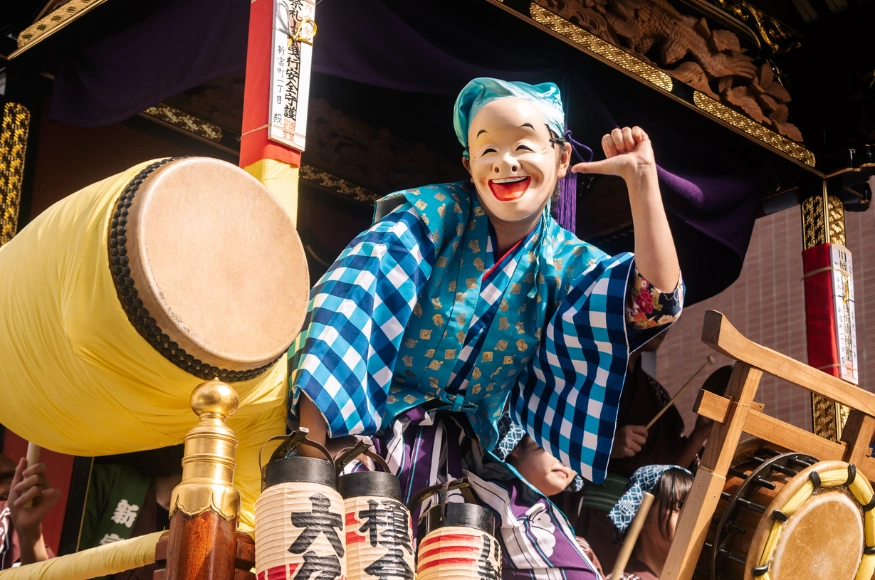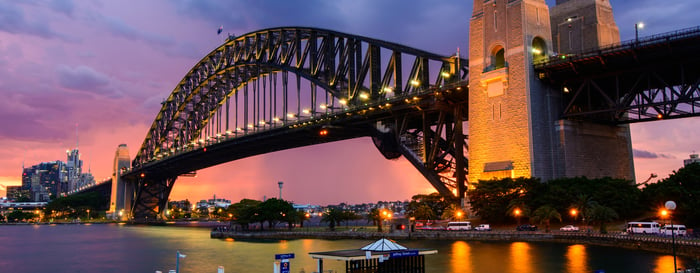
The city of Aomori in northern Honshu becomes a blaze of light and colour.
I’m wearing the traditional clothing of haneto dancers – a kimono with coloured bows and tinkling bells; and a tall straw bonnet, extravagantly-decorated with bunches of fruit and flowers – and I’m in the thick of the Nebuta parade. I’m hopping from foot to foot, doing the haneto two-step to the music of flutes, cymbals and drums, as the floats roll.
Earlier that evening, I’d shuffled along in a patient queue on an empty floor of a department store, waiting my turn to be fitted into the elaborate costume. Female dancers branch off behind a screening tarpaulin to the left, males go to the right. But behind our screen is a gaggle of giggling elderly ladies. When we’ve stripped to our underwear, they help us into the various layers of coloured material, tugging at the sashes, tying the bows and fluffing up the flounces. I’m offered a pair of toe socks and straw sandals, but I opt for my own footwear, knowing that I’m in for a strenuous evening.
The moment has come! Our team leader steps forward, fan in one hand, microphone in the other, to begin the call-and-response Nebuta chant that energises the dancers.
‘Rassera! Rassera!’ he shouts.
‘Rassera, sera, sera!’ we yell back.
And on we go, double-hopping in time to the call, which I’m told means something like a combination of ‘Here we are, come and see, let’s go, join us!’
Guided by their own fan-waving leaders, the float teams follow the dancers, bringing their huge sculptures to life by dipping, spinning and weaving between the cheering crowds that line the streets. Samurai warriors glare fiercely into the night; gripped by mighty hands, swords of light clash; fanged serpents writhe, coil and spit lightning; the foaming crests of breaking sea-waves engulf demons dancing among tongues of flame.

After one circuit of the central city blocks I’ve done enough dancing, so I slip out of the parade and find a good vantage point to watch the procession pass by. I see my team make a second circuit, then a third – the kids in the front row show no sign of slowing down and the ‘rassera, rassera’ chanting of the leaders is just as loud and enthusiastic as ever, although I’m footsore and ready to call it a night.
Walking back towards the department store to return my haneto dancer’s costume, I pass a side street where a cluster of restaurants and bars announce their presence with neon lights and brightly-coloured cotton banners over the doorways. Dancing is thirsty and hungry work and the thought of a crisp local draft beer and some of northern Honshu’s wonderful seafood draws me towards them.
I push through the banners of a friendly-looking izakaya, with plastic models of the bill of fare displayed in the window – pubs in Japan are always places to eat as well as drink. I’m not alone in my haneto regalia, although like the other customers who have been in the parade, I’ve chosen to ditch my flower and fruit-filled bonnet, so that I can navigate my way through the bar door more easily. I take a seat and order a Sapporo beer (it’s from Hokkaido, just across the Tsugaru Strait, so I guess that’s local enough) and point politely to the photo of a sashimi platter.
An oriental proverb says ‘you can’t wrap fire in paper’, but the artists who create the magnificent floats for the annual Nebuta festival seem to have done just that. Each August, the city of Aomori in northern Honshu becomes a blaze of light and colour.

The massive sculptures that are illuminated from within, jockey through the streets on truck-sized wheeled platforms that are pushed and pulled by teams of up to 50 hard-working men and women. The Nebuta floats take inspiration from Japanese history, Kabuki theatre, manga comics and even popular television programmes.
I’m wearing the traditional clothing of haneto dancers – a kimono with coloured bows and tinkling bells; and a tall straw bonnet, extravagantly-decorated with bunches of fruit and flowers – and I’m in the thick of the Nebuta parade. I’m hopping from foot to foot, doing the haneto two-step to the music of flutes, cymbals and drums, as the floats roll.
Classic Colombia
Bogota Cartagena Colombia's Coffee Triangle
- Explore historic Bogota's colonial houses and cathedrals
- Visit one of the country’s most beautiful towns, Villa de Leyva
- Stop by the UNESCO World Heritage Site of Cartagena
- Learn about the local coffee-making process at a traditional plantation
- Enjoy different flavours and local delicacies on a street food tour
Northern Spain Delights
Madrid Basque Country Barcelona Spain Europe
-
See famous artworks by Spain’s most celebrated artists
-
Enjoy a pintxos tour of San Sebastian with a local
-
Go wine tasting in La Rioja, Spain’s most renowned wine region
-
Discover the futuristic architecture of Bilbao
-
Explore Catalan Modernism with a tour of Gaudi’s most extravagant architecture
The Best of New South Wales
New South Wales Australia Australasia
-
Visit Sydney Harbour on a two-hour private cruise
-
Discover Australian wildlife on nature tours in the Blue Mountains
-
Go horseback riding through Australia's picturesque Wolgan Valley
-
Explore the vibrant underwater world of Lord Howe Island
-
Be pampered in luxury accommodation and awake to stunning views every day








